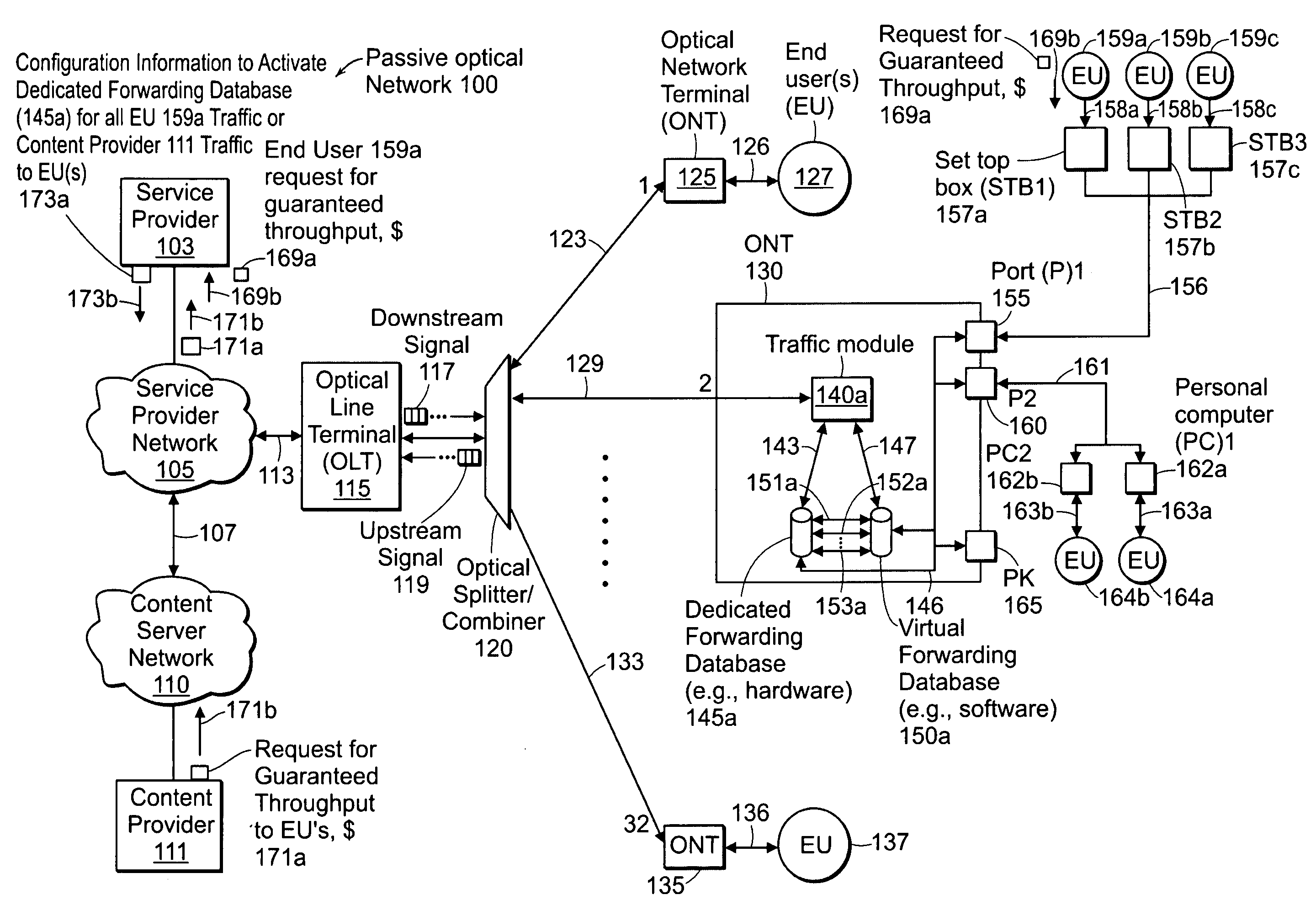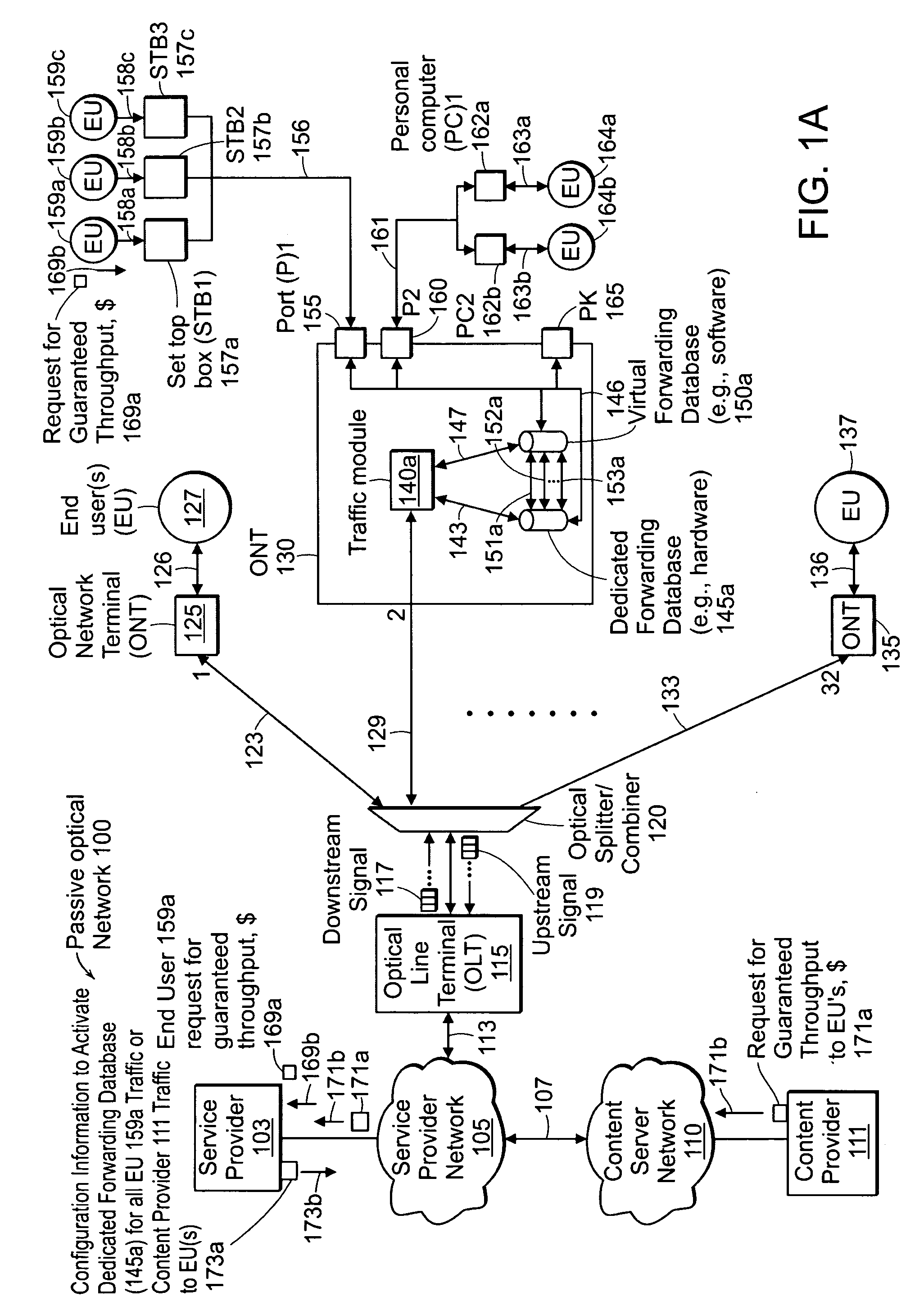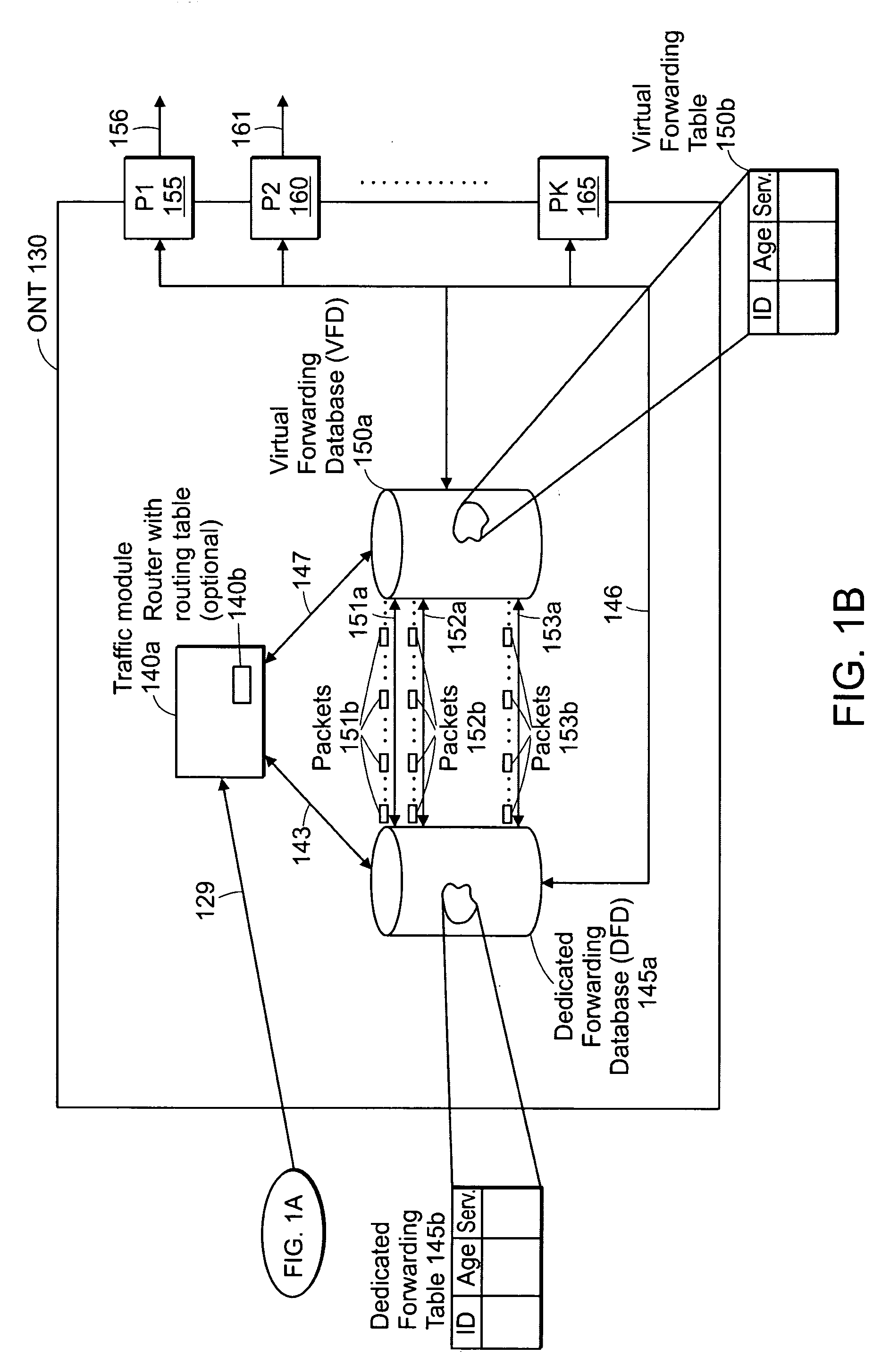Method and apparatus for managing traffic flow of forwarding entries through a virtual forwarding database of a network node
- Summary
- Abstract
- Description
- Claims
- Application Information
AI Technical Summary
Benefits of technology
Problems solved by technology
Method used
Image
Examples
Embodiment Construction
[0016]A description of example embodiments of the invention follows.
[0017]Network services provided through the current use of passive optical networks include telephone, cable television, and the Internet. Each optical network unit or terminal contains a dedicated forwarding database that sends packets of network services through the network. The dedicated forwarding database has certain limitations. One limitation is the number of entries available. Once the dedicated forwarding database is full, the end user will not receive network services that are unable to be sent through the database. This may result in flooding or the dropping of packets, thereby reducing the number of end users to receive the network services.
[0018]Additionally, in current practice, source and destination addresses of traffic flow may be learned by ports (or interfaces) in a passive optical network and aged entries of the traffic flow may be removed from a forwarding database. Searches of a database contai...
PUM
 Login to View More
Login to View More Abstract
Description
Claims
Application Information
 Login to View More
Login to View More - R&D
- Intellectual Property
- Life Sciences
- Materials
- Tech Scout
- Unparalleled Data Quality
- Higher Quality Content
- 60% Fewer Hallucinations
Browse by: Latest US Patents, China's latest patents, Technical Efficacy Thesaurus, Application Domain, Technology Topic, Popular Technical Reports.
© 2025 PatSnap. All rights reserved.Legal|Privacy policy|Modern Slavery Act Transparency Statement|Sitemap|About US| Contact US: help@patsnap.com



